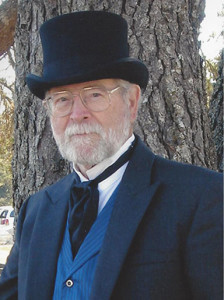Dean Robertson's Blog, page 11
January 11, 2016
Book Review~~”Thanksgiving”: Mary Arno’s New Orleans
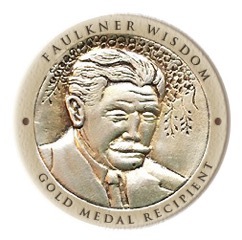
Mary Arno’s Thanksgiving is set against the backdrop of the city of New Orleans and it is, at one level, a love letter to the city of her birth.
It is also a great deal more.
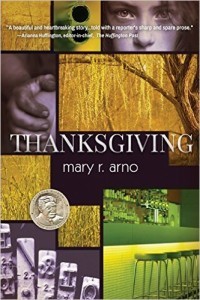
“God, for the gladness here where the sun is shining at evening on/the weeds at the river,/Our prayers of thanks.
/For the break of the game and the first play/and the last,/Our prayer of thanks.”
_Carl Sandburg
And so we suspect, as we read this epigraph, the kind of writer we are about to encounter.
Mary Arno chose, from all the poems she had read, this fragment from Carl Sandburg’s “Prayers of Thanks.” Mary Arno chose this poem that prepares us for her awareness of both the sunshine and the weeds, of the first play of the game, and the last.
Mary Arno chose a few lines of a short poem that reveal a novelist whose vision is whole.
And so, Thanksgiving begins, in that best of all possible places–in the middle:
“Arkansas was the last street for as far as you could see in the newest, barest western end of Kenner, Louisiana.”
Before we know it’s happening, we have met our first narrator, Peg, and already hear her clear voice–straightforward, unflinching, honest, funny, self-deprecating–the voice of an observant and articulate child. I liked her right away. She brought to mind the narrator in one of my favorite films, “Days of Heaven.” I think I would know Peg’s voice anywhere, even without the italics (shown in teal, against olive green).
“I could walk from our house to the Napoleon Avenue library and read at a table in the old brick building, cool and quiet on a hot day. . . . So when Mama tells me that we are going back to the city, I know God has answered my prayers.”
 The Napoleon Avenue Library
The Napoleon Avenue Library
What Arno does with narrative voice in this novel is complex, intriguing, sometimes puzzling, requiring either that the reader ignore the shifts, or that the reader pay very close attention indeed. I chose the latter.
“They went in to clean up in the pleasant air-conditioned coolness of the Browns’ house. The only moving air in the Hennessy house was from the giant attic fan in the hall, and that was only about half a degree cooler than outside. When it rained in the afternoon—about every day—they had to turn off the fan or it would draw puddles of water in through the windows.
Peg used toilet paper to wipe all the blood off her legs, but some of it had gotten onto her shorts.
I am still thinking about the Witch as I clear the table after dinner. Phyllis and I need to do some more sleuthing. Then Mama asks me to help with the dishes.
I went over to the sink and turned on the water. ‘I know you want to go out and play, Peg, but I thought we could talk for a bit.’
Play? Does she think I’m six years old?
‘Well.’ Mama handed Peg a plate, which she rinsed and placed on the drain board. Then two forks. Peg put them in the silverware holder. Then a saucer. Peg placed it at the opposite end of the drain board from the plate.”
I first became aware of Mary Arno’s novel because I spotted the cover on Koehler Books’ website. I am always intrigued by a puzzle, and this book cover made me stop, look closely, and then try to figure out what each piece might be. I’m still not sure I got them all.
It was a good while before I went back for another look and discovered the locale and read a synopsis of the book and some background on the author. A while later, I stumbled on Arno’s “Thanksgiving” Board on Pinterest. Oh, the wonderful photographs of New Orleans, each paired with a short passage from the book. And so, reminded of a wonderful city, discovering these small teasers of a novel well-written, I approached Mary to find out if she would submit the book for my review.
She sent me Thanksgiving.
Mary R. Arno is an award-winning author and journalist who has worked at newspapers across the southern United States, from Los Angeles to New Orleans to Orlando, with a couple of others in between. As a reporter and editor, she covered everything from murders and refinery explosions on the police beat to small-town politics to national political conventions and campaigns. At the Los Angeles Times, she was part of teams awarded Pulitzer Prizes for covering the L.A. riots in 1992 and the Northridge earthquake in 1994.
A native of New Orleans, she lives on a farm in Upstate New York with her husband and the youngest three of her four children, spending as much time as possible in the city of her birth.

Thanksgiving is based on a short story that won the gold medal in the Faulkner Wisdom competition.
Peg is not always that child whose voice we hear on the first page, and intermittently throughout the novel–readily identifiable by the italics in which it always appears.
Peg grows up, of course; Peg goes out; Peg has a life.

“I think we need some coffee,” Gabe said. They slowly crossed Decatur, Peg trying to avoid pebbles on her bare feet, to Café du Monde.”
Arno is willing to give her readers at least a hint on this tangled, and essential, matter of storyteller:
“Thanksgiving is told through the stories of four main characters, representing upper, middle and lower-class New Orleans society beginning in the 1960s. Three are women (girls at the start); one is a teenage boy and then a man.”
It is the storyteller, after all, who decides what parts of the story are important, which characters are likable, which details must be included, and where the story ends. And when there are four? The reader had better, as I’ve said, be paying very close attention. The reader of Thanksgiving had best be paying very very close attention.
“THE WOODEN THEATER SEATS in the back of the lecture hall creaked as Peg sat down. She pulled up the swing-arm half desk, and placed the Psych 201 textbook, notebook, and pen from her knapsack on it. Leaning down, she fished out a brush and ran it through her hair. Then she tucked the knapsack under the desk. It was freezing cold in the room. She was sitting right under an air-conditioning vent. She began to pack up and move when students started filing in the end of the row and blocked her.
It’s September, and for the first time since I arrived here at Lockett Hall, I look around. Every single person in this class, girls and boys, old and young, is wearing blue jeans and T-shirts or work shirts. Hanging out. Except for the girl who sits down next to me. She seems to be wearing a pajama top over a pair of cutoff blue jeans. She slumps down and closes her eyes.
And what about me? Me, the “M. Margaret Hennessy/ Kenner, Louisiana” who smiles out from the “Who’s New at LSU” book in her high school cap and gown photo?”

LSU Evangeline Hall
“They had a Tom Collins before he drove her back to Evangeline Hall. They sat in his car and talked about psychology and politics and Vietnam until the flashing porch lights signaled curfew.”
Thanksgiving is, in many ways, a classic and not surprising tale of several generations of resident families in a small town somewhere in the South or the Midwest. One thinks immediately of To Kill A Mockingbird or Faulkner’s Yoknapatawpha County. Multiple narrators are not uncommon. A narrator heard both as a child and as an adult–a typical literary device, usually effective but nothing revolutionary. Why, then, am I so taken with Mary Arno’s novel? Even the ending, a bit of a surprise, is not unheard of in the canon of American literature. There are novels that are well-written (though not nearly enough of them).
Mary Arno’s Thanksgiving is a fine piece of writing that employs many of the tried-and-true devices of good literature and employs them with skill. Mary Arno’s Thanksgiving juggles narrators with a particular deftness of hand. Mary Arno’s Thanksgiving is a wonderful evocation of a specific time and place.
Mary Arno’s Thanksgiving is, above all else-and for this reviewer, the thing that defines it–a piece of writing from the heart and rich with the tradition of the best American literature.
Thanks, Mary Arno, for sharing your history, your sense of place, your writing skills, and a piece of your heart with all of us.

St. Louis Cathedral
“Musicians played for groups of tourists along the closed-off block of Chartres between Jackson Square and St. Louis Cathedral”
I am providing no color-coding for this passage. Can you identify the narrator? Perhaps you’ll need to order and read Arno’s Thanksgiving.
The post Book Review~~”Thanksgiving”: Mary Arno’s New Orleans appeared first on Dean Robertson.
Authors Visiting Authors: In Virginia with Rachael Steil

Authors Supporting Authors
My New Mantra–because it works
Today is Thursday January 7 2016, early in this new year. On Saturday, Rachael Steil, a very young woman with an incredible writing skill, will fly in from Grand Rapids, Michigan, for a two-day visit. We plan to talk, read, walk my neighborhood, eat the finest pizza on the planet, see at least one movie, and spend most of Monday with someone whose mission is supporting authors and helping authors to support authors.
Today I shop for groceries, clean my house, and–of course–read and write.
Several months ago I “met” Rachael, first by email, then on the telephone, and did some editing on her book, Running in Silence. She is a fine writer. Since 2012 she has had a blog of the same name where she posts weekly on the subject of eating disorders and diet fads among serious athletes.
In October, when I flew to Michigan for book signings for Looking for Lydia; Looking for God, Rachael and I finally met in person. One thing led to another; we exchanged guest blogs,
and Saturday, Rachael will get off a plane in Norfolk, Virginia.
Authors Supporting Authors
Also, authors eating pizza and going to movies with authors–
because that works, too
And, finally, today is Saturday January 9 2016. Rachael’s plane arrived on time; she picked up a rental car, set her GPS, and headed my way, arriving without mishap.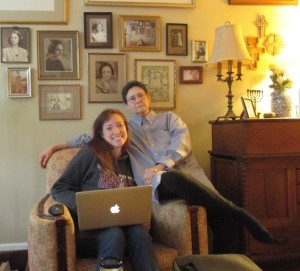
We have talked, laughed, taken photographs, seen a good movie, cried, and eaten a good dinner.
We are actually sitting here at the moment on our respective laptops, both of us contentedly typing away.


Does one type these days? Or is it “keyboarding”? Old authors want to know.
Sunday morning coming down. I am up at my usual 5:00, shower, and sit quietly, checking my email, sipping tea, reading a novel called Thanksgiving which I will review here for its author, Mary Arno. It’s a a lovely read for a warm morning in my neighborhood.
Around 9:30, Rachael appears, showered and dressed, and I make soft-scrambled eggs with cream cheese and dill. We take photographs of our laptops for the Featured Image, then return to our MacBook Airs (I wonder if I get a commission from Apple for that mention). We sorted through quite a few pictures that we finally rejected as Featured Images, but they’re possibly worthy of a glimpse.
First was my attempt to include a page of Rachael’s book; good idea, but it’s just not readable. And Isaac felt it didn’t show him at his best.
In the next shot, you can almost make out the text, but we really wanted both laptops in the picture.

We discussed all the activities available to distract us from our writing. We like them all.
I’m expecting a local friend today and the three of us will walk down to see “Spotlight,” which promises high-quality intensity of a very different kind than yesterday’s “The Danish Girl.’ I am old enough, of course, that this new film immediately takes me back to the Watergate scandal and “All The President’s Men,” still one of my favorites.
There is something exciting and quintessentially American about these hard-hitting newsroom stories. Classic movie reviewer, Ellen Bunton, tells me that they were popular at least as early as the 1940’s and recommends “Foreign Correspondent,” one of Hitchcock’s from 1940, and Billy Wilder’s “Ace in the Hole” (1951). And, of course, “Citizen Kane” is about one of America’s most notorious newspapermen.
From yesterday, “The Danish Girl”
https://www.youtube.com/watch?v=d88APYIGkjk
Ahead, “Spotlight”
https://www.youtube.com/watch?v=Zg5zSVxx9JM
Monday January 11 2016 I sleep inexplicably late–almost 7:00; Rachael is up early. I give her cold pizza for breakfast. We visit, type on our laptops, dress, and leave at 10:00 for our appointment with friend and publisher, John Koehler.
Rachael has managed a photo without my noticing, which I now notice she has posted on Facebook.
It is nearly impossible for me to report on our time with John. We sat for an hour in the beautiful space that is Koehler Books and Studio. He talked; he asked Rachael questions; he listened; he shared exactly the relevant information from his years in the world of publishing; he suggested gently; he advised firmly; a few times, he issued instructions.
He was John Koehler
We went to lunch. We blessed our food. John ordered an appetizer of Oysters Benedict which I love and Rachael had never tried. I think she liked them. At lunch, more questions, more listening, more information and advice. We are authors; we talked about writing.
We laughed and we learned and we were mindful of every moment of this lovely day. Rachael and I raced back to get her on the road to the airport. And she’s headed home with her notes to think, to consult, to make decisions about the next steps.
Rachael boards her rental car, headed to Norfolk International Airport
I walk home to reclaim my space, knowing I will miss her presence in it.
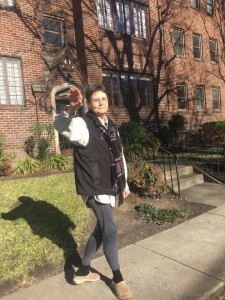
Authors Supporting Authors; Authors Visiting Authors
because it works.
The post Authors Visiting Authors: In Virginia with Rachael Steil appeared first on Dean Robertson.
January 6, 2016
Classic Movie Review: Broads from Brooklyn
 Classic Movie Review by Ellen Bunton
Classic Movie Review by Ellen Bunton(and her eager assistant, Meatball)
A Regular Monthly Feature
The first Wednesday of the month.
Wednesday January 6 2016
2016

January 3, 2016
Book Review: “Some Wars Never End”: Rainbow Gardens
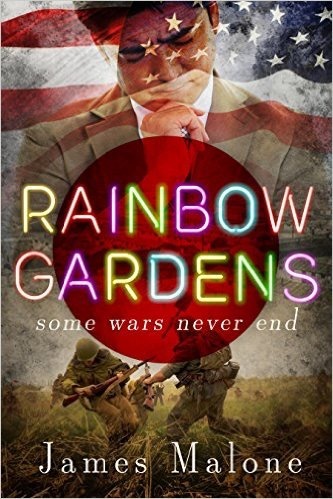
Rainbow Gardens: some wars never end
by James Malone
On his web page, James Malone tells the story of how his book cover was created; it’s a fascinating look at the process of trial and error that results in our first impression of any book. Mr. Malone is about to take you on a 700-page romp through an adventure story the likes of which you seldom find.
I recommend starting with the cover:
http://jdmalone.net/tour-rainbow-gardens/the-perfect-cover-story/


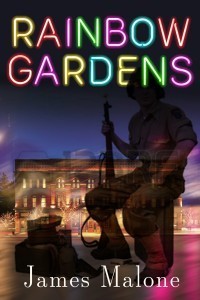
Rainbow Gardens
James Malone
Rainbow Gardens has been described as a “WWII Historical Fantasy.”
I have to admit that I couldn’t quite figure out what that might be, but whatever it is–and the author admits he’s not quite sure, either–I was not prepared for trolls.
Trolls!?
Yes, indeed.
Chapter One is titled “Long Trolls’ Journey Into Night: 1945,” which I suppose covers both the Fantasy and WWII. And it begins with what will be the chapter’s fractured refrain:
Oh say, can you see?,
as a character named Franco struggles along a mountain trail, anticipating “the Divine Wind” that was forecast by an “old Pueblo” whose name is Popay.
By the rocket’s red glare,
“Now he sees it–a shaft of light bursting crimson into the night sky, burning through the clouds and splashing them a dark pink. . .the light bathes his sunglasses in a strawberry paste.”
With me so far? Trolls, a Divine Wind, and an Old Pueblo.
Then the narrator dangles a clue that things might be even stranger than old Pueblos and Divine Winds, because this Franco character is suddenly afraid that “the sons of Adam” have “found our cave.” We suspect almost immediately that the sons of Adam could be us.
The Bomb bursting in air,
“Before he can finish, a searing light, a rampaging gas-oven light turns the dark to dawn. It is an x-ray light and the trolls ooh and ahh at the sight of their neighbors’ purple neon skeletons.”
This too-obvious “tell” so early in the novel suggests something more ahead than 700 pages of plot-driven narrative.
Before I take you any further into this great romp of a book–exciting, odd, funny, full of suspense, a page-turner, a beach read, popular fiction at its liveliest–it’s only fair to warn you that there are wheels within wheels. And Mr. Malone hasn’t actually hidden them.
Scroll down a bit on the author’s Blog and you’ll find a section called, simply, “Why I Wrote Rainbow Gardens,” which begins,
“This story is inspired by a Japanese immigrant to America named Harry ‘Taiju’ Hayashi. In the 1930’s Harry built North Dakota’s first motel in Carrington, and he named it ‘Rainbow Gardens.’ He did quite well for himself until the outbreak of war, when he was interned for the duration at Fort Lincoln.”
James Malone, whose father served in the Pacific during World War II, has–it turns out–written a novel about forgiveness. James Malone, impressed by his father’s willingness to “forgive his former enemies,” thought long and hard about the power of forgiveness and about our “competitive, tribal urge to survive” which blocks the way to the redemptive power of forgiving and being forgiven. James Malone has written the unlikeliest novel whose “underlying message,” according to his editor, is that “we all bear the mark of Cain. . .and the people we marginalize–the trolls of our society–are no worse nor better than us, because we all seek. . .redemption.”
James Malone has–it turns out–written a novel about redemption.
But trolls! I’m just warning you.
I picked up Rainbow Gardens, both anticipating and–forgive me, James–dreading 700 pages of the latest fantasy. It wasn’t long before I knew I’d signed on for something else.
You are going to enjoy Rainbow Gardens, but you won’t get off that easy. On the final page of the first chapter of Malone’s novel,
“When night falls, it’s time for homecoming. . .Tonight we head for the Rainbow.”
That our trolls are still there. . .
The temptation is great to throw caution to the winds, post a SPOILER ALERT, and tell all. The plot is complex, woven through with Malone’s knowledge of the Bible as well as twentieth-century history. Take, for example, well over halfway through the book, on what my Kindle assures me is “6 hrs 48 mins left in book”:
“And it came to pass that in the years after the Great Flood, Greco and Casandra lived a long and fruitful life, so long as they remembered to come in and out of the sun. Cassandra bore many children, but without the sun’s nourishing rays they proved sickly and slow to grow.”
World War II. History. Fantasy. The Book of Genesis.
Rainbow Gardens in a nutshell: Entertaining. Thought-provoking. Well-researched. Ambitious.
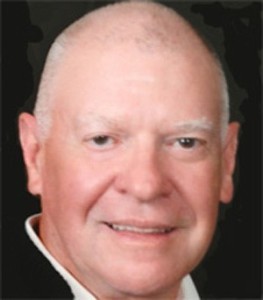
James Malone has had a long career in writing, from senior writer at a mid-size advertising agency to senior communications and public affairs positions in federal and state agencies.
The son of a career U.S. Navy officer and a Vietnam Era veteran himself, James is a child of the Cold War. He grew up in cities around the world, including New York, San Diego, Yokohama, London, Paris and Stuttgart. He has moved often since then and has hung his hat in places such as Minneapolis, Atlanta, and Washington.
Besides writing, his interests include collecting first editions and soccer, which he learned from the English neighbor kids when he lived in London. He was also a competitive sailor for a number of years, racing a 20 foot C-Scow, an inland lakes boat.
He currently resides in Wisconsin with his wife and two daughters, who take turns trying to teach him the Zen of Volleyball.
And somewhere along the way, James Malone wrote a novel about trolls, about our worst and our best selves, about moving–every one of us–toward forgiveness, toward redemption, toward salvation–and about finding them in the unlikeliest places: in the midst of sleeping babies and dust motes, pelicans and goldfish and old men fishing at the edges of ponds.
James Malone has written a novel in which he dares to suggest that we might even find what we’re looking for at a motel called Rainbow Gardens.
~~~~~~~~~~~~~~~~~~~~~~~~~~~~~
The only political satire in Looking for Lydia; Looking for God is the fact of Lydia herself, wife of a Union soldier who came to Virginia to make war and returned to make his fortune. Lydia, who went out into the streets of this southern city where her husband had shed blood, to bind up the wounds of all sorts inflicted on its women. Find a copy of this book for yourself in the new year.
The post Book Review: “Some Wars Never End”: Rainbow Gardens appeared first on Dean Robertson.
January 2, 2016
Confessions of a Workaholic Turned Book Reviewer

 A week or so ago, having joined a closed group started by a marketing consultant friend on Facebook, I came up with what seemed to me at the time a wonderful idea.
A week or so ago, having joined a closed group started by a marketing consultant friend on Facebook, I came up with what seemed to me at the time a wonderful idea.
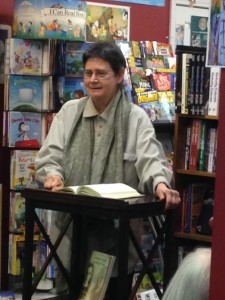
I am not a person who understands much about moderation.
I am a person who makes daily to-do lists, then amended and enhanced to-do lists for weekends; my weekend lists incorporate all unfinished tasks from the Monday through Friday lists, along with additional items especially designed for weekends.
I am convinced that weekends begin on Friday mid-day and end at sunrise on Monday. They do not include any time for the standard “weekend” activities–relaxing; going to movies, museums, ballgames, campgrounds. They never include napping, although I frequently include that on my lists.
These are excellent lists: organized, neatly written on narrow-ruled legal pads, re-written for appearance if I get sloppy with, say, taking notes during a phone call, which much to my disappointment, I often do. I am an Olympic-quality list maker.
I am also an unredeemed workaholic.
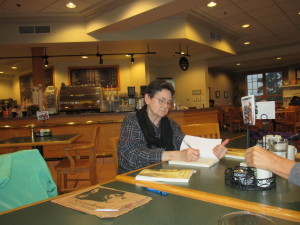

So–my wonderful idea. I posted an “update” in the group, offering to write an extended and elaborate review of anyone’s book on my website/blog. I had just published one review, and I posted a link so people could get an idea of what they might expect for their books.
http://pdrobertson.com/2015/12/13/remarkable-women-pendred-noyces-remarkable-minds/
On the one hand, I would write more than the usual paragraph or two, and would include images and passages from their texts and fuller and more personal author biographies; on the other, this review would take more time and they could be waiting as much as a month. I even offered to write one of those Amazon “quickies” as soon as I had finished reading the book and while I was working on the longer piece.
What did I think? That no one would take me up on the offer of an elegant and very personal review that would go out automatically to most of the social media–Free??
I am now piling up books for review in every possible form: digital manuscripts on my laptop; ebooks on my Kindle; even actual Books (remember those?) arriving via the United States Postal Service. They include a Civil War novel; a collection of letters; an espionage novel; a series of fairy tales for adults; two memoirs (three memoirs as of this draft); and a 700-page work of “historical fantasy.”
In my usual approach to any project, I have a need to plan and prepare ahead (remember those lists). What this particular inclination looks like in this particular situation is: as I was reading the Civil War novel and waiting for those War letters to arrive, I set up, titled, jotted down some notes, and found appropriate images for every single book I’ll be reviewing. The result is that I have four or five reviews up and ready for me to begin writing. A lot like the horses walked into the starting gate at the Kentucky Derby.
The queue is long and getting longer.
A friend asked me just two days ago what I would do if someone sent me a book that was really, really bad.

The post Confessions of a Workaholic Turned Book Reviewer appeared first on Dean Robertson.
Book Reviews~Memoirs: “Survival” and “My Fat Dad”


The news from the world of publishers and sellers of books isn’t encouraging. Memoirs don’t sell. If it is shelved under the BISAC subject heading of “memoir,” you’re not going to grow up to be John Grisham–even if you’re John Grisham. Remember A Painted House? Neither do most people.

Why would anyone care that John Fahey was born in Northern England to a mother who was unmarried and a father who beat him or that Dawn Lerman’s father, across an ocean in Chicago and New York, controlled his whole family as he dragged his sometimes 400-pound frame through the latest diets?
Why would I, whose father was a tall, quiet, handsome man who died of a heart attack when I was sixteen, feel any kinship with either Lerman’s father and his struggles with weight or with Fahey’s father who was a violent alcoholic?
Dawn Lerman is a slender and healthy young woman who writes for the New York Times Well Blog.
A blog about her grandmother, “Beauty”, begins:
“Throughout my childhood, my father was extremely fat, and my family life was ruled by his obsession with finding new ways to lose weight.”
Her memoir is filled with recipes.

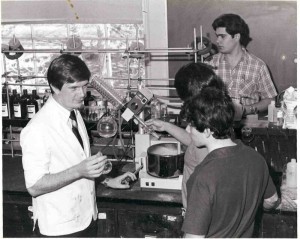
John Fahey had a successful and groundbreaking career as a Ph.D. chemist in university classrooms and in the laboratories of major pharmaceutical companies.
In Survival, like the optimist he says he is, John Fahey describes, with great determination, a small moment of blessing in the chaos of his childhood.
“As a toddler I do remember some good times. The day when I asked my father what he was doing in the garden. . .and he told me he was planting lettuce and I in my innocence was puzzled at how he could be planting letters.”
Why would anyone outside the circle of immediate family and friends have the slightest interest in this young woman, now a successful journalist, or in Mr. Fahey, a retired scientist whose perennial garden, claiming an increasingly large percentage of his nearly four acres in the hills of Tennessee, is the envy of everyone who sees it?


What are the qualities that turn the personal reminiscences of a John Fahey or a Dawn Lerman–of someone whose face does not appear either on the morning news or on the back of my cereal box–into a story we all want to read?
Why are these two strangers of any interest to me at all?
What do they have in common?
And how does the genre of memoir pull them together?
John Fahey didn’t grow up to be John Grisham. He grew up to be a successful scientist and, in recent years, a man devoted to healthy living, building, in his personal life, on the foundation of the longevity studies that inspired his professional achievements. erinpharm.org. It was these studies that convinced him that the reversal of certain conditions was possible and that set him on the path of wellness he walks today.
Recipes.
Seeds and soil.
Making a life, one recipe, one seed at a time. Digging up one row for planting. Preparing one dish for one holiday. The small realities of daily life make up the meaning.
Dawn’s memory strikes a familiar chord in mine, rings a faint bell, as I read,
“I never thought my paternal grandmother, Bubbe Mary, liked me very much, even though every time I saw her, two or three times a year, she would hold out her arms, saying, ‘Who loves you the most in the whole world? Who loves you the most in the whole world?’ I always wanted to respond, ‘Not you!'”
And in Survival, the small jewels of personal history are much more effective than the larger context Fahey tries to establish with references to George Orwell and two world wars. That framework is interesting; it lends perspective. But I can find those details laid out in a history text. Not so, this moment from a life-from John Fahey’s life, and from mine:
“And it was there I heard of Thomas Wade, my grandmother’s grandfather. . .one of the Catholic farmers in Connaught allowed to own his own land by the English. It had been in his family for generations and had a water wheel mill which ground grain into flour.” 
With that brief description, we swell with the pride of the small boy, sent to live with his Irish grandparents for an “idyllic” few years, discovering in their stories that he belongs to someone.
Dawn writes about nutrition, and her memoir includes recipes of which Dr. Fahey would approve.
Today, Dawn’s father is a trim 250 pounds and a vegan.
And every recipe in My Fat Dad is nestled in a small family story. The recipe for Aunt Jeannie’s Apple Strudel exists in the context of an afternoon’s cooking turned into an emergency sleep-over in a snow storm. The sub-title of My Fat Dad is A Memoir of Food, Love, and Family With Recipes.
“With each foot of snow that fell, we made another batch of cookies–round cookies, oval cookies, bow-shaped cookies, cookies with anise extract, cookies with almond extract, and cookies flavored with fresh orange juice when we ran out of vanilla. What started out as a one-night sleepover, when my parents and grandparents were in the hospital, turned into a three-day bake-a-thon with Aunt Jeannie.”
John’s title is, at the same time, harsher and more clearly defined–Survival: From Broken Childhood to Ph.D.
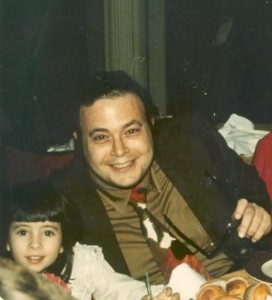
Here are two memoirs that could hardly seem more different. A young woman, living in the city, a man in his seventies whose arms are often covered with the soil of his acres in the Tennessee hills. Yet they have in common fathers whose personalities and obsessions informed all life around them, and who could suck the air out of a room just by walking into it.

And we all have fathers.

As I was researching the Roper family, and had gathered quite a bit of information on Captain Jack Roper, as his family called him, I asked one of his great-great-granddaughters what she thought about him, how she would describe him. She paused for a good long time and then said, quietly, “The word ‘tyrant’ comes to mind.”
Yet here was the man who paid for every charitable project his wife suggested.
We all have fathers.
This New Year, buy a copy of Looking for Lydia; Looking for God for someone you love.
Buy one for your father.
The post Book Reviews~Memoirs: “Survival” and “My Fat Dad” appeared first on Dean Robertson.
Book Review~~”My earliest memory is of a gun”

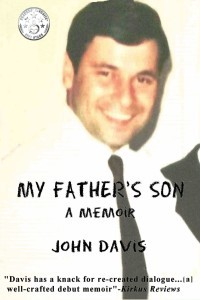
“My earliest memory is of a gun.”

And so begins the first chapter of John Davis’ memoir, My Father’s Son.
John Davis knows how to write an opening line.
“My earliest memory is of a gun”
Is there a reader who could put the book down at that point?
I briefly flirted with the idea of adding this third memoir to my review of two others, written but not yet published, but it just didn’t work. It was watering down that original review and not doing justice to Davis’ book, either. A no-go.
So I find myself, on this second day of the new year, reading John Davis’ memoir of his devastating early years with a father who beat him regularly and seemingly at random. A child who grows up with the threat of unpredictable, but frequent, violence that often seems to be set off by nothing more than his walking into a room never really stops looking over his shoulder. 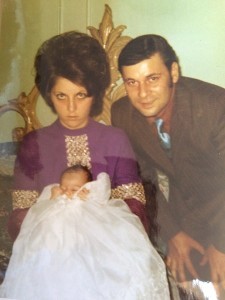
It is a tribute to Davis’ determination to survive that he can write at the beginning of Part II of My Father’s Son–a bit prematurely, it turns out– that he “was 34 years old, married for 3 years, and had a good job and a home in northern New Jersey.” He felt he had put his father and his childhood safely behind him.
Then he finds an email from his mother, with whom he has had no contact “in a few years.” The email is followed by a large envelope full of documents.
After a long childhood of violent abuse, he is about to be blasted again. There are many different kinds of violence.
My earliest memory is of a gun.
A real strength of John Davis’ memoir is his refusal to embrace the easy answers or the pat conclusions. At the time of his writing, Davis admits to his confusion. He moves forward; he is fully participant in his life. But the facts haven’t cleared up the morass of a muddy and confused childhood.
The facts probably never do. Writing sometimes can. John Davis has at least attempted to put some of his demons to rest–and to share his story with others. With a sigh of relief, he writes,
“Writing this book has released a lot of my anger so I can now say that I hope he has found some peace in his life. I also hope that sometimes he is able to reflect and is sorry for things he has done wrong— especially to me.”
Your readers hope so too.
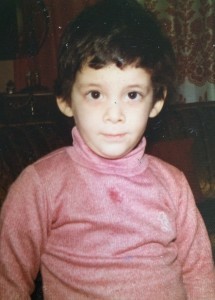
John Davis grew up in Brooklyn and Staten Island, NY, and now lives in West Milford, NJ, with his wife and their two cats. He works as a Plant Manager and is pursuing a Master’s Degree in Business. John is also the bass player in a local rock group, Rumble Dolls. My Father’s Son is his first book.
The post Book Review~~”My earliest memory is of a gun” appeared first on Dean Robertson.
December 31, 2015
Book Review A Fairy Godmother for the New Year: Meet Maven
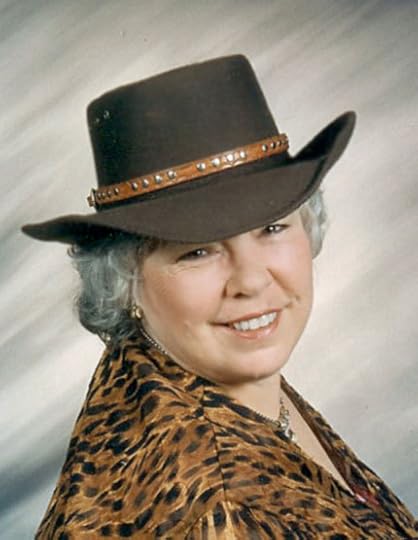
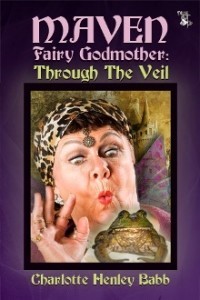
Happy New Year to all Readers. Welcome 2016
In Maven Fairy Godmother: Through the Veil, Charlotte Henley Babb creates a world in which anything is possible and introduces us to Maven, a brand new Fairy Godmother, and the Land of Faery–a place out of time, located nowhere and everywhere.
Maven Morrigan appears for the first time in Through the Veil, “broke, busted, and despairing over the mess of her life.” Maven is middle-aged and miserable when she has just the kind of opportunity that you and I might secretly dream about.
She is offered a job as–yes, it’s true–a Fairy Godmother!
And so begins the new life of Maven Morrigan, a life that will leave you breathless with laughter, nodding with understanding, a little teary-eyed, and–above all–hopeful. Especially if you are a woman, over forty, and find yourself at a bit of a loose end. You might not get a phone call on a dead cell phone inviting you into an alternate universe but Charlotte Babb and her Maven assure you there is a “coming of middle-age” story in your future. Her real goal in writing these charming stories is to “be a fairy godmother” to herself and to all of us lucky enough to pick up one of her books.
I don’t know about you, but I often feel in need of a Fairy Godmother.
I can recall in flawless detail the kind of fantasy that turns you into something exotic and transports you to another world or another time. As a child, I had them all the time; the truth is, I sometimes still do. So did Charlotte Henley Babb, who says she’s been writing “since I could hold a piece of chalk and scribble my name.” Babb’s grandmother read her fairy tales from a very early age and, as an adult, she followed that early interest by reading the fairy tales of other cultures. She wonders what happened to those of our own culture..
The Maven stories are a good step toward renewing those essential myths that tell us who we are.
From Through the Veil:
“Fiona Silverthorne, Fairy Godmother Superior, stared deep into the crystal ball on her desk. Each pass of her hand took her further into the future, confirming her worst fears. Her eyes burned from scrying. Each day the other dimensions took more of her territory, twisting the stories and seducing the fairy godmothers who tended them.”
As a new Fairy Godmother, Maven has been given not just the excitement of this magic new world but the thing we all need–and women nearly fifty and older seldom find–a purpose. Indeed, these fairy tales are worth some thought. They sometimes deliver a serious message with a very light hand.
But still, “Fairy Godmother Superior”?
Babb’s idea for the title of her second book came from her devotion to Fractured Fairy Tales on the Adventures of Rocky and Bullwinkle cartoons “where the villains were not quite so villainous and the heroes not so heroic.” It fetches us, struggling and delighted, into the world of Saturday morning silliness.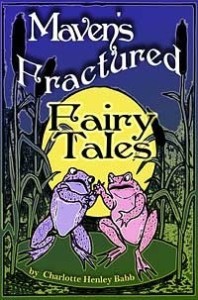
Can you possibly tell me who could resist these lines from “Bubba and the Beast,” the first of the Fractured Tales? Who, now I mention it, could resist that title?
“Off-duty in the Twilight Lounge, Maven Morrigan, Fairy Godmother, listened for those heartfelt words, ‘I wish’ while her best friend, Grizelda the Troll, grumbled about the under-the-bridge trade.”
And, before you leave Faery, I would suggest dipping into the more recent collection of stories, Pumpkineater whose Dedication reads:
“To Women of a Certain Age everywhere
Who know who they are and who they are becoming”
and whose stories include
“Kiss of the Kudzu”
and
“Beans”
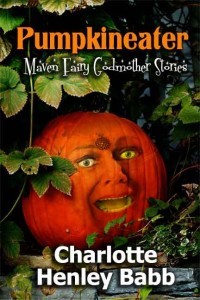
Charlotte Henley Babb is out there somewhere right now, waving her Fairy Godmother wand and waiting to hear “I wish.” Don’t disappoint her.
Thanks, Ms. Babb.
I wish!!!
Although Lydia Bowen Roper had no cell phone in the 1870’s and most likely wasn’t called to fill the position of Fairy Godmother, still she worked magic for many young women in the streets of her adopted city of Norfolk, Virginia.
When she died, the newspaper headline read, “Beloved Philanthropist Dies.”
In Looking for Lydia; Looking for God
Read the touching story of this woman’s work with the poor, the disenfranchised, the elderly. Read about a real-life Fairy Godmother right after the Civil War.
Buy a copy, or more than one, for someone who might need a Fairy Godmother today
The post Book Review A Fairy Godmother for the New Year: Meet Maven appeared first on Dean Robertson.
December 26, 2015
Book Reviews The Civil War: A Novel and One Hundred Letters
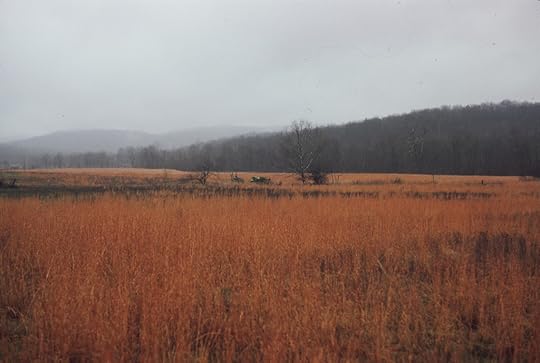

Steve Wiegenstein
This Old World: A Novel of Utopian Dreams and Civil War


Nick K. Adams
My Dear Wife and Children:
Civil War Letters from a 2nd Minnesota Volunteer
Nick K. Adams’ great-great-grandfather, Corporal David Brainard Griffin, serving for two years in “Company F of Minnesota’s 2nd Regiment of Volunteers within the Union Army. . .wrote his family nearly every week–at least one hundred letters in all.”
It is these letters that Adams has transcribed and collected in a beautifully printed and bound volume. They were written in pen or in pencil, on whatever paper the Corporal could find; he wrote sitting on the ground or leaning against a supply wagon. He wrote from the most violent war this nation had known. The letters are primary documents from the front.
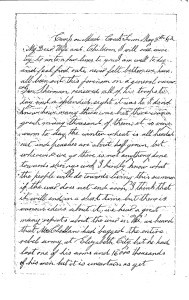
Letter Number 2: Ft. Snelling, Minn, Oct 12, 1861
My Dear Beloved Wife & Children,
I will take my pen in hand once more, and address a few lines to you, and let you know how I am, and how I am getting along I am well, and as tough as a knot. I have enjoyed myself as well as could be expected. . .I have just come in from dress parade, and as I stood in front of them looking at the soldiers with a band of music on the march before them, the tears came into my eyes. I did wish that you could have been here to see them with me. . .
Letter Number 93: Camp Thomas near Winchester Tenn Aug 6th 1863
Ever dear and affectionate Wife and children,
I will try to write a few lines to you today. . .I am well to day, and I have been well for a long time, and I hope I shall remain in good health the rest of my term of service. It is very hot today. . .it seems as though that you do not get all of my letters, or else you forget to mention any thing about them, one in particular, the one that had a few lines folded up in it, for “your eyes only.”
On the book’s back cover, Adams poses the age-old questions: “What does a father write to his wife and young children when he’s gone to war? Does he explain why he left them? How does he answer their constant questions about his return? Which of his experiences does he relate, and which does he pass over? Should he describe his feelings of separation and loneliness?”
A letter from the Captain of Corporal Brainard’s company to his wife, written from Chattanooga Tennessee on Sept 30th 1863, reads:
It becomes my painful duty to inform you that your husband, formerly a member of my company, was killed in the desperate battle which took place near here on the 19th & 20th of this month. But he fell as becomes a soldier while in the discharge of his duty
I am reminded of the closing line of Wilfred Owen’s poem, written in 1917 from another war:
My friend, you would not tell with such high zest
To children ardent for some desperate glory
The old lie: Dulce et decorum est
Pro patria mori. [It is sweet and fitting to die for one’s country]
Corporal David Brainard Griffin was killed in the Battle of Chickamauga.
Nick K. Adams is a retired elementary school teacher and an avid Civil War re-enactor and historical speaker who lives in Washington State.
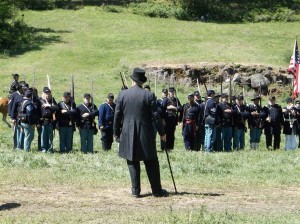
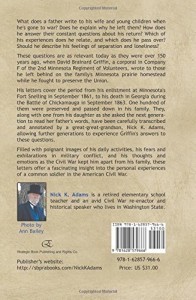
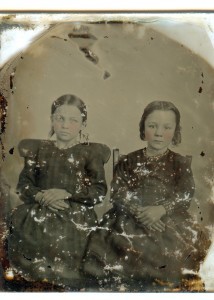
Steve Wiegenstein’s novel, This Old World, begins:
Charlotte Turner stood beneath a redbud tree and watched the last six chickens of Daybreak scratch for morsels among the hen bit carpeting the cemetery. They’d been kept in a coop for all the years of the war, far enough into the woods that the sound of their clucking couldn’t be heard by a passing raider, then brought down to scratch whenever the weather allowed. Any sign of trouble and she could shoo them into the forest within moments.
And so, This Old World reeled me in and kept me in its thrall.
I am an avid reader, but a critical one, demanding excellence from words and sentences and paragraphs, with which I have always been in love. I am not easily seduced. Steve Wiegenstein had me from that first description as his novel strutted its stuff–the small details that breathe life into a scene; the teasing introduction of a character we sense is important without in the least knowing why. Who is Charlotte Turner? What is Daybreak? It is an irresistible temptation.
I made no attempt to resist.
But I am also a skeptical reader, not inclined to optimism based on a single paragraph, always waiting for the author to disappoint as that first glimpse of excellence proves a lucky shot.
Wiegenstein seldom wavers as he brings his characters onto the stage, one after another, offering just enough to keep us turning pages. Who are they? What are their relationships to each other? What have they done; what have they left undone? What might they do?
We meet the elderly Emile Mercadier; James Turner; the raider, Sam Hildebrand; the Irishman Flynn; Kathleen Flanagan Mercadier; Charley Pettibone; Mrs. Smith; the children-Newton and Adam, Angus, Josephine.
For those of us who, when we read This Old World, didn’t know that it was the second volume in a series about these characters, Wiegenstein doesn’t miss a beat. Not only do his characters not need the first volume, Slant of Light, as an introduction, but the author succeeds in weaving their histories into This Old World so smoothly that there isn’t a seam in the fabric. I never suspected that first book as I read the second.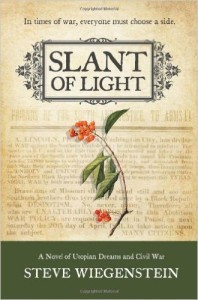
This Old World is a rich mix that includes the sometimes breathtaking word or phrase. “A burdening silence” skirts too close to poetry to be anything else.
And what could be added to this description of a moment between man and boy:
When Turner awoke, his boots were off and a small boy had pulled up a wooden chair next to his waist, watching him intently, his feet dangling. He was skinny and towheaded, with his hair cropped close to his scalp. Turner scooted himself to a sitting position against the wall. His legs felt heavy.
The subtitle of This Old World is A Novel of Utopian Dreams and Civil War, and if the novel has a weakness it lies in its occasional–and unnecessary–lapse into an explanation of what it has made amply clear in its description, narration, and dialogue. We do not need to read:
a community of equality and sharing, like the Brook Farm and New Harmony communities that had gone before them
When we can be present with Flynn at the exact moment when he understands:
But then the diphtheria took his mother, the war scattered the boys, and Aideen was lost to something, the letter didn’t say what. Starvation from the raiders, that’s what he figured. He’d done it himself in the march to the sea, take the last bag of cornmeal from a family and turn them out to root. Was it any wonder how much hate they all felt?
A reviewer who loves the book she reviews is at a distinct disadvantage–afraid she has said too much and certain she has not said enough.
This Old World, set in a specific time and place, breaks out of the bounds of the Civil War to reveal a firm grasp of the nature of human beings in any situation.
Charley knew it was insane, but in a strange way he missed the war. The days of rapid movement and sense of urgency, the comradeship, the laugh- ter and joking in idle times.
Mr. Wiegenstein understands the intoxication of war, and he grounds us fully in the geography of this one:
After that came years of marching and fighting that stretched across the middle South, Shiloh to Richmond to Chattanooga to Atlanta, ending up in the Carolinas at the Surrender.
In its November 1984 issue, Esquire published an essay by William Broyles Jr, called “Why Men Love War.” You might look it up. http://public.wsu.edu/~hughesc/why_men_love_war.htm
Perhaps the author of This Old World understands more than that about men:
But he was still crying, and he couldn’t seem to make it stop. He had gone through the war unhurt, but here he was on his own doorstep, and he could not get to the door behind him, but could not step off into the shade of the yard, he was stuck here on the stone, and he could not, could not, could not make it stop.
I was born and raised in the eastern Missouri Ozarks — my folks grew up on adjoining farms, and our family roots go deep in Madison, Iron, and Reynolds counties. I went to college at the University of Missouri. After a few years as a newspaper reporter, I returned to school and then got into the higher education biz, with teaching stints at several institutions. I currently live and work in Columbia, Missouri. I’m an avid canoer, rafter, and kayaker on Missouri’s float streams…..a longtime member, friend, and supporter of the Quincy, Illinois, Unitarian Church…..a fan of the St. Louis Cardinals…..a hiker (ok, make that walker)…..a board member of the Missouri Writers’ Guild. I find pennies on the sidewalk more frequently than anyone I know.
Looking for Lydia; Looking for God is another work whose setting–in a particular time and place–are incidental to the human experiences and emotions that are common to all of us, anywhere.
If you didn’t buy a copy of Lydia for someone you love for Christmas, it isn’t too late to consider it for the New Year–
or even for Valentine’s Day
The post Book Reviews The Civil War: A Novel and One Hundred Letters appeared first on Dean Robertson.
A Review of Looking for Lydia; Looking for God~Guest Reviewer
 stevewiegenstein ~
stevewiegenstein ~
News, announcements, events, and ruminations about my novel series, including Slant of Light and This Old World, and about creativity, fiction, Missouri, the Ozarks, and anything else that strikes my fancy

Looking for Lydia, Looking for God
26
Saturday
Dec 2015
Tags
Aging, Bible, books, Civil War, Dean Robertson, history, Lydia Roper, Norfolk, reviews, Virginia, writing
I came by an interesting book the other day. It’s called Looking for Lydia, Looking for God, and it’s part-memoir, part-religious meditation, part-biography.
The story is this. The author, Dean Robertson (despite the unorthodox first name, Dean is female) had occasion to stay for some months at the Lydia Roper Home, a home for elderly women in Norfolk, Virginia, while recovering from a fall. During her time at the home, Robertson led a Bible study group with some of the women who lived there, starting with four and gradually growing to around a dozen. She also became curious about Lydia Hand Bowen Roper, the home’s namesake and inspiration. Some might say “curious about” is an inadequate phrase, preferring “obsessed with.”
In Looking for Lydia, Looking for God, Robertson draws together three threads: her personal journey from ailment to recovery, from withdrawn-ness to engagement; the stories of her Bible study group, the women who made it up and their encounters with Biblical texts; and the teasing-out of the sparse details of the life of Lydia Roper, whose husband, a wealthy lumberman, endowed the home shortly before his death in 1921. The result is an odd, charming, occasionally frustrating, immensely enjoyable book.
The women of the Bible Study group are a varied group, some inquisitive, some uncommunicative. Robertson portrays them vividly. For a sort-of memoir, the book is less forthcoming about Robertson herself. We learn that she is a retired academic who grew up in north Georgia, and not a whole lot else. This reticence is unusual for a memoir, and I found myself wishing for more internal revelation. Lydia Roper also remains stubbornly inaccessible to Robertson’s efforts at inquiry; she left little written record, and her family’s memories are vague. Robertson describes her frustration at her efforts to uncover more about the elusive Lydia:
“At this point, the result is uncertainty, and all I can find is that sometime in 1920 or 1921, Captain John Roper either ‘built,’ ‘established,’ ‘donated,’ or ‘founded’ the Lydia Roper Home. The Home either was, or was not, intended as a haven for Confederate widows. Two sources say yes; a local historian who grew up in the area says, ‘The Confederate widows twist likely came about as a result of rationalizing having a Damn Yankee establish a very useful and needed charitable home in an extremely Confederate area. Even one hundred years after The War, partisan feelings about Northerners were still quite strong. A family member says the original charter more likely read something like, ‘… for impoverished white women in the city of Norfolk.’
Well.”
Anybody who’s engaged in research into an obscure historical figure or event can relate to that “Well.”
What holds these three threads together? To me, it’s the searching and the losing. The women of the Bible study group work their way through Old Testament and New, responding to the stories in conventional and unconventional ways, searching for meaning, consolation, and explanations, all the while growing older and more frail. They lose their faculties, their health. Dean Robertson keeps looking for Lydia, even as Lydia continually recedes on the horizon. Memories fail; stories prove untrustworthy; yet the effort rewards itself. The writing is literary and highly crafted, but not overly so; the characters of the women shine through.
The book contains a lot of discussion of the various characters in the Bible, particularly women. I’m just about the least qualified person in the country to talk about that element of the book; Bible study has never interested me. So I’ll leave it to others to judge the originality and soundness of the exegesis. I’m more interested in the human stories of the elderly women who gather in the second floor parlor of the Lydia Roper Home. And these stories – warm, touching, and often sad – are well worth the reading.
Looking for Lydia, Looking for God is a lovely book, especially for the spiritually-minded.
It’s published by Köehlerbooks and is available from their website, as well as from Barnes & Noble and Amazon. You can learn more about Dean Robertson on her website pdrobertson.com
And please read more of Steve Wiegenstein’s thoughts on his blog, stevewiegenstein
Mr. Wiegenstein describes Looking for Lydia; Looking for God as “odd, charming. . .frustrating. . .immenseley enjoyable.”
How can you possibly resist? Order one online today! Lydia Roper’s story needs to be known.
The post A Review of Looking for Lydia; Looking for God~Guest Reviewer appeared first on Dean Robertson.


